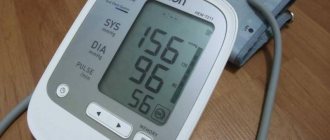08.08.2017
Last modified: April 14th, 2020 at 05:45 pm
Upon reaching 35 years of age, women and men often experience a disease such as hypertension. To maintain health and reduce the likelihood of hypertensive attacks, experts recommend limiting strength training, following a diet, and avoiding many medications.
Since ancient times, we have loved to steam in steam rooms, considering this procedure to be healing and rejuvenating. Therefore, patients suffering from hypertension are tormented by the question: does visiting a bathhouse increase or decrease blood pressure? Let's figure out whether high temperature can really provoke deterioration of well-being and fainting in hypertensive patients and how this affects the cardiovascular system.
The healing effect of a bath on the body
Hot air and therapeutic fumes have a complex effect on the organs and systems of the body. In addition to improving the condition of the skin and the functioning of the heart muscle, the increased temperature in the bathhouse normalizes the condition of the nervous system, has a beneficial effect on the functioning of the stomach and intestines, strengthening overall health and reducing the risk of developing chronic diseases.
The effect of the bath on the heart and blood vessels
- The blood vessels dilate. The resistance of the vascular walls decreases, blood supply improves. This process helps lower blood pressure.
- The frequency of contractions of the heart muscle increases. Heart rate reaches 140 – 170 beats per minute. There is an increase in the speed of blood flow, which is the prevention of congestion.
- Diastolic pressure after a bath decreases, and systolic pressure increases.
- The elasticity of blood vessels increases. The effect of high temperatures on blood vessels is a kind of gymnastics. The vascular walls are strengthened, which reduces the risk of stroke or heart attack.
The effect of the sauna on the nervous system
The central nervous system reacts differently to exposure to heat. It depends on the length of stay in the steam room. So, if a person steams for no more than 10 minutes, then the following changes are observed:
- light perception of the eyes improves (increased sensitivity to bright light disappears);
- motor response to light and sound stimuli increases;
- there is an improvement in the accuracy of movements;
- sleep and concentration are normalized.
If a person spends 20 or 30 minutes in a steam room, the condition of the central nervous system worsens and the functioning of the musculoskeletal system is disrupted.
Effects of heat on the respiratory system
During the bath procedure, alveolar air is exchanged, which is directly related to improved thermoregulation of the body. Due to the increase in frequency and deepening of breathing, lung capacity increases. Normalization or a slight drop in pressure is observed.
Important! The greatest benefit from therapeutic inhalations can be obtained in a bathhouse. Medicinal substances enter the deep parts of the lungs, which enhances the therapeutic effect.
If a patient is diagnosed with rhinitis and swelling of the nasal mucosa, a therapeutic bath procedure will have a drying effect, which will contribute to a quick recovery.
Impact on the muscular system
In this case:
- coordination of movements improves;
- the amount of energy expended decreases;
- muscles are enriched with oxygen;
- recovery processes are normalized.
Don't forget that steam has a positive effect on the skin. The pores expand, which leads to the effective removal of toxins and dirt. Blood flow helps saturate the epithelium with oxygen, due to which the skin rejuvenates and becomes elastic.
The therapeutic effect of the bath reaches all organs and systems of the body, strengthening it, increasing the performance and activity of the brain.
Why does blood pressure drop after a bath?
Inferior vena cava syndrome during pregnancy
During pregnancy, a woman's body experiences significant stress. The volume of circulating blood increases, conditions for venous stagnation appear.
Synonyms for this condition:
- hypotensive syndrome on the back;
- aortocaval compression syndrome;
- postural hypotensive syndrome;
- hypotensive syndrome of pregnant women in the supine position.
Why does this condition occur?
Inferior vena cava compression syndrome usually occurs when the pregnant woman is lying on her back.
Signs of such compression begin to occur periodically in the third trimester of pregnancy if the woman is in a supine position.
Cardiac output decreases - the amount of blood ejected by the heart into the aorta. As a result of a small amount of blood and a reduced oxygen content in it, a lack of this gas occurs in all tissues - hypoxia. All organs of the woman and fetus suffer.
Suddenly, blood pressure drops quickly, in some cases to 50/0 mmHg. Art.
On the other hand, a compressed inferior vena cava cannot pass the entire volume of venous blood from the legs and lower torso to the right atrium. Therefore, venous congestion develops in the veins of the lower extremities.
How does the condition manifest?
The inferior vena cava is compressed by the enlarged uterus when the woman is lying on her back. At long gestation periods or with polyhydramnios, this can also occur in an upright position of the body.
In severe cases, a woman quickly turns pale 2 to 3 minutes after turning on her back, complains of dizziness and darkening of the eyes, nausea and cold sweat. More rare signs are ringing in the ears, heaviness behind the sternum, a feeling of strong fetal movement.
Suddenly developing pallor and hypotension are very similar to signs of internal bleeding, so the doctor may mistakenly suspect placental abruption, uterine rupture, or myocardial infarction in such a pregnant woman.
The appearance of a vascular pattern and varicose veins in the legs is also associated with the described syndrome. One of the common manifestations of this condition is hemorrhoids.
What to do in this condition
The optimal position for a pregnant woman during sleep is lying on her left side.
What not to do in the third trimester of pregnancy:
- A pregnant woman over 25 weeks should not sleep on her back;
- It is forbidden to engage in physical exercises performed while lying on your back, including tensing the abdominal muscles.
What recommendations can the doctor give:
Vasospasm of various organs and methods of combating the disease
- memory losses;
- loss of orientation;
- headache;
- feeling of nausea;
- dizziness;
- speech disorder.
Vascular spasm of the eye
The problem of pathologies of the eye vessels today is one of the most significant in ophthalmology, due to the fact that all known eye diseases are closely related to impaired vascular circulation, or initiate spasm of the eye vessels.
With the initial development of spasm of the blood vessels of the eye, the patient experiences a feeling of irritation of the eye and rapid blinking. The causes of vascular spasm are lack of sleep schedule, poorly lit workplace, and watching TV for long periods of time.
To cure a spasm, you need to be examined by an ophthalmologist, who will prescribe special gymnastics, as well as exercises to train the eye muscles.
Peripheral vasospasm
The most common spasm is peripheral vascular spasm. Subsequently, the blood collects in the central parts of the vascular bed, thereby ensuring priority perfusion of organs that are more sensitive to heart hypoxia.
It is the adrenal glands that increase the release of norepinephrine and adrenaline into the blood several times. Spasm of peripheral vessels leaves its mark on the course of post-traumatic syndrome. Considering that these receptors are least found in the brain and heart, then these organs are the least affected.
This is a very dangerous disease - vasospasm; treatment should be started if you notice the first symptoms.
How to relieve vascular spasm? Include more hawthorn walnuts, nuts, onions, carrots, and honey in your diet. Try to consume less spices, table salt, and animal fats. Herbs include cucumber, motherwort, sweet clover, oregano.
Please note that all information posted on the site is for reference only and
not intended for self-diagnosis and treatment of diseases!
Copying of materials is permitted only with an active link to the source.
Is it possible to go to the bathhouse if you have hypertension?
Many patients note the negative effects of baths with high blood pressure. The complaints are as follows:
- it gets dark before my eyes;
- there is a buzzing in the ears;
- patients faint;
- a hypertensive crisis occurs.
Important information: If the skin on your face is constantly red
Therefore, the myth about the dangers of elevated temperatures during hypertension has taken root in people’s minds. However, all negative manifestations are associated only with the fact that people do not know how to properly steam in saunas with high blood pressure.
Of course, it is strictly forbidden to go to the sauna when your blood pressure is high. To obtain a therapeutic effect from bath procedures, you should wait until the pressure normalizes to 140/90.
Important! If your blood pressure is high, take antihypertensive medications and wait until your blood pressure drops to normal levels. Only after this you can take a steam bath in the steam room.
If your blood pressure rises due to nervous strain or as a result of stressful situations, you do not need to resort to taking medications to normalize the condition: you can go to the bathhouse without any fear for your health. On the contrary, exposure to high temperatures will help strengthen the cardiovascular system, which will avoid hypertension during or after another emotional outburst.
If the patient is diagnosed with hypertension of the second or even third stage, then the bath should be abandoned. If the desire to wash in the bathhouse does not fade, then you should remember a simple rule: you should not stay in the bathhouse for more than 15 minutes and it is strictly forbidden to enter the steam room.
Contraindications for bath procedures
The tolerance of temperature contrast by a hypertensive patient depends on his state of health at the time of visiting the bathhouse.
It is strictly forbidden to take procedures with temperature changes:
- during the acute course of the disease;
- during hypertensive crisis;
- in the presence of concomitant heart or vascular diseases.
It should be remembered: in a tightly closed room with a high temperature, the human heart begins to actively work for wear and tear. Arrhythmia and shortness of breath appear. This condition is critical for those who have underlying heart diseases.
The following diseases complicate hypertension:
- defects with disruption of the basic functions of blood flow;
- history of stroke or heart attack;
- vascular atherosclerosis.
According to medical data, contraindications for hypertensive patients visiting the bathhouse include diseases of the genitourinary system, a period of acute respiratory disease, and a tendency to increase blood pressure more than 200 mm Hg. Art.
To eliminate all risks and complications in a timely manner, consult a cardiologist and therapist before visiting the bathhouse.
How to properly take a steam bath if your blood pressure is higher than normal
It is very important to steam in case of hypertension in a cooled bath in dry air. To avoid an increase in blood pressure and achieve a calming effect, you can steam a broom made of oak branches.
Important! Closely monitor your heart rate, shortness of breath, and general well-being. If it becomes bad, stop the procedure immediately.
It is permissible to warm up in the steam room for no more than 5 minutes. To prevent an increase in pressure, you should take a horizontal body position. In between visits to the steam room, you are allowed to rinse with water, but the water should not be ice-cold.
The number of trips to the steam room can vary from 3 to 5. It is imperative to observe time intervals.
Experts recommend the following time intervals:
- first approach - no more than 2 - 3 minutes;
- second approach - no more than 4 minutes;
- third run - 5 - 7 minutes;
- fourth approach - 7 - 10 minutes;
- fifth run - 2–3 min.
It is strictly forbidden for hypertensive patients to jump into a pool of cold water or run out into the cold. These actions put a strain on the cardiovascular system, which can cause increased heart rate and acute pain in the heart area.
It is important to drink hot linden tea in a bathhouse or sauna. Drinking plenty of fluids will help the body maintain thermoregulation. Don’t forget to cover your head with a hat and your body with a terry towel.
To protect yourself from the consequences, you can go to the steam room accompanied by friends or relatives, who will come to the rescue at any time.
Attention! Do not forget to take antihypertensive medications with you to relieve an attack.
For hypertensive patients, it is important to maintain the ratio of humidity and air temperature. If air humidity exceeds 80%, then the maximum permissible temperature is 50 °C. At a humidity of 15%, heating can be increased to 90 °C.
After steaming, to normalize your pulse and general condition, you need to lie down for 20–30 minutes. Only after such a rest can you repeat the warm-up in the steam room.
Visiting a steam room with low blood pressure
Doctors point out that visiting the steam room and hypotension are absolutely incompatible things. But this applies to those people who are diagnosed with severe hypotension (if blood pressure levels drop to 80-90 units). If blood pressure drops to 100 and no more units, then visiting the steam room is not prohibited.
Rules for preparing for a bath day
To avoid negative manifestations during the procedure and get the maximum benefit from visiting a bathhouse or sauna, the following rules should be followed:
- Before performing bath procedures, you should definitely consult with your doctor at the clinic. It is advisable to take a blood sugar test. If the permissible amount of sugar is increased, then you will have to temporarily abandon the bath.
- The day before visiting a Russian bath or sauna, you must limit your alcohol consumption. It is especially inappropriate to drink alcohol-containing drinks directly in the bathhouse.
- Avoid eating fatty and salty foods before the procedure. 3 hours before visiting the bathhouse, you can eat a small portion of vegetable salad or 200 grams of cottage cheese.
- At home, apply a rich cream to the surface of the skin - this will protect the epidermis from overheating and moisture evaporation.
- To reduce the risk of increased intracranial pressure, you should not wash your hair before visiting the bath. A little greasiness will prevent heat stroke.
Important information: Indian method of treating hypertension with iodine: scheme, reviews
Follow the above recommendations and you can protect yourself from attacks of hypertension while relaxing in the bathhouse.
Important! When the air humidity in the steam room is high, the heart rate should not exceed 160 beats per minute.
Contraindications for baths and saunas
Not all people can visit a bathhouse or sauna without harm to health. It is recommended that patients suffering from:
- Oncological diseases,
- Hypotension,
- Exacerbations of any chronic diseases.
Sauna for hypertension is contraindicated if:
- Arterial hypertension of the 3rd degree,
- Predisposition to hypertensive crisis,
- Severe heart pathologies,
- Diseases of the heart and blood vessels,
- High body temperature,
- Respiratory diseases.
The pressure in the bathhouse has risen sharply - what to do?
If suddenly while visiting the bathhouse a person begins to feel unwell and signs of a hypertensive crisis appear, the patient should immediately be taken out into the fresh air.
The first signs of a hypertensive crisis in the bath:
- throbbing pain appears in the back of the head;
- dizziness;
- weakness and trembling of body muscles;
- feeling of heat;
- darkening of the eyes;
- noise in ears;
- significant increase in heart rate;
- feeling of pain and heaviness in the heart area;
- lack of air;
- nausea or vomiting.
If the condition does not improve in the fresh air, you must call an ambulance or the medical staff of the bathhouse (if there is a full-time doctor).
The patient should be placed with pillows under his head and legs, which will facilitate the breathing process. Do not change body position or lift the person. Care must be taken to take an antihypertensive drug.
Drugs that will help lower the numbers and stop arterial hypertension include:
- Captopril;
- Clonidine;
- Angiopril-25;
- Kapoten;
- Capozide.
Important! When exposed to these drugs, blood pressure can drop quickly, so two tablets is the maximum permissible single dose.
If severe headaches occur, the person should be given a diuretic:
- Furosemide;
- Indapamide;
- Indap;
- Acripamide;
- Ionic.
If the patient complains of pain in the heart and shortness of breath, then you need to put a Nitroglycerin tablet under the tongue or drop 20 - 40 drops of Valocordin, Valoserdin or Corvalol into a glass of water.
Often, increased blood pressure in a person causes nosebleeds. To stop bleeding, apply an ice pack to the bridge of your nose.
Features of visiting a bathhouse for hypertensive patients
Is it possible to go to the bathhouse with high blood pressure? In the case of hypertension, you need to weigh the pros and cons before going to the bathhouse. There are certain rules by following which hypertensive patients will protect themselves from complications.
- You shouldn’t overeat before a bath, but you shouldn’t take a steam bath on an empty stomach either.
- Measure your pulse and blood pressure before going to the bathhouse to make sure they are normal.
- Don’t steam yourself, but be in the company of a person who can, if your condition worsens, pull you out of a hot room and provide first aid.
- Do not visit the steam room without a hat; be sure to wear a felt cap. It will protect your head from exposure to hot air.
- A sharp temperature contrast causes the arteries to tone, while their lumen will decrease and the pressure will increase. This is fraught with negative consequences. Therefore, before the steam room you need to splash yourself with cool water, and after steaming, do not jump into a cold pool, but take a warm shower.
- You cannot drink alcoholic or fortified drinks in the bathhouse. You also do not need to eat fatty, spicy and salty foods. In addition, alcohol does not combine with blood pressure medications.
- You should drink more fluids to maintain your fluid balance, but these should be herbal teas, not mineral water. Before preparing the decoction, you need to read about the properties of the plants included in the composition, since there are herbs that can provoke hypertension.
- There is no need to sit in the steam room until exhausted; it is better to make several passes. Between sessions, hypertensive patients should rest in a ventilated area. It's better to lie down on the bottom shelf.
What not to do in the bath
During the procedure, you need to monitor your condition. You need to leave the steam room immediately if:
- headache;
- chest discomfort;
- lack of air;
- nausea;
- fainting state;
- tachycardia.
Complications from a bath for a hypertensive patient
These symptoms mean that the patient’s blood pressure has risen sharply and he needs to take an antihypertensive drug. After visiting the bathhouse, people need rest to restore body functions. Pressure is restored after a bath in different ways. If you visited a bathhouse, the blood vessels will return to normal in 2-3 hours, and after a sauna - in 50 minutes.
When a bath is contraindicated
There are a number of restrictions when people with hypertension are contraindicated from visiting a sauna or bathhouse:
- the disease has progressed to the second or third degree;
- with systematically high blood pressure levels, which are difficult to normalize with tablet form of medications;
- in case of hypertensive crises;
- when there are deviations in the functioning of the heart muscle;
- for diseases affecting blood vessels;
- in case of progression of chronic diseases;
- in the presence of a viral infection in the body;
- in case of elevated body temperature;
- when high blood pressure is recorded before visiting the bathhouse - more than 145/130 mmHg;
- when low blood pressure is diagnosed - 100/50 mmHg;
- in case of recent myocardial infarction or stroke;
- with regular nosebleeds;
- during menstruation.
Important! Contraindications should not be neglected. A negligent attitude towards one's health can aggravate the course of the disease and lead to serious consequences, including death.
What is hypertension
The disease caused by high blood pressure is called hypertension. Normal blood pressure in a healthy person is approximately 120/80 mmHg. Individual low blood pressure can range from 100/65 to 100/75, and high blood pressure ranges from 135/100 to 145/100. People may feel comfortable with such indicators, but they are not the norm for the human body and often signal pathology.
The first digit of the parameters indicates systolic, upper pressure. It shows the force of contraction of the heart walls. The second number is diastolic pressure, its value in the relaxation phase of the heart. In the initial stage of hypertension, blood pressure rarely exceeds 140/158 to 90/97. Its increase occurs sharply and without observable reasons. After some time, the pressure returns to normal. Such phenomena are accompanied by headache, spots before the eyes, tinnitus, and dizziness.
With the second degree, the upper numbers already reach 160/178, and the lower ones – 100/108. Increased blood pressure remains in this state for a long time and does not normalize without the use of medications. There is a danger of negative effects on the brain, kidneys, and heart. A person often feels tired for no reason, his memory deteriorates, his pulse quickens, and a migraine occurs. The third degree is a chronic form of the disease. Blood pressure may rise above 180/110. Changes in the body become irreversible. The fourth degree is often fatal.










